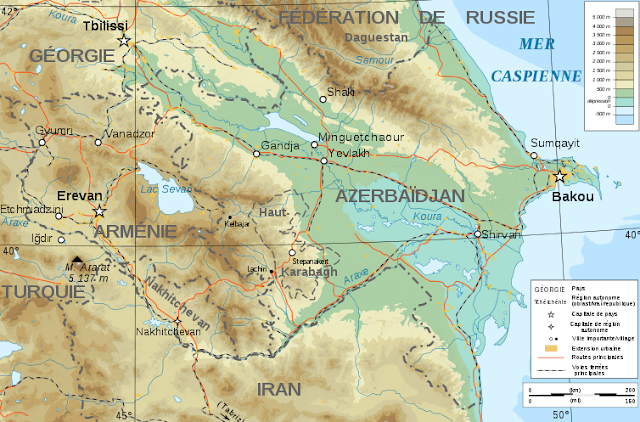 |
| Navigating the Complexities: Armenia-Azerbaijan Border Issue |
Armenia and Azerbaijan have taken a significant step towards resolving their long-standing conflict over the Nagorno-Karabakh region by placing the first border marker. This move follows a bitter history of contention and recent developments indicating a shift towards peace. However, challenges persist as both nations navigate the complexities surrounding this issue.
Background of the Conflict:
Nagorno-Karabakh, located within Azerbaijan, has been a focal point of dispute since the dissolution of the Soviet Union. The region, predominantly inhabited by ethnic Armenians, declared independence from Azerbaijan in 1991, sparking a war that lasted until 1994. Despite a ceasefire, sporadic clashes persisted over the years.
Recent Developments:
In 2020, a six-week war resulted in Azerbaijan reclaiming significant portions of the breakaway region. Subsequently, in September 2023, Azerbaijani forces' swift advance led to negotiations mediated by Russian forces, culminating in Armenian authorities capitulating.
Border Demarcation and Resistance:
Efforts to demarcate borders as part of the peace process have encountered resistance in Armenia, particularly in border regions affected by the proposed demarcation. Protests erupted, reflecting concerns over territorial integrity and perceived encroachment by Azerbaijan.
Progress Towards Peace:
Despite domestic opposition, leaders from both nations have expressed a commitment to reaching a peace agreement. Azerbaijani President Ilham Aliyev and Armenian Prime Minister Nikol Pashinyan have indicated progress towards a common understanding, emphasizing the urgency of defining borders to prevent further conflict.
Role of Russian Peacekeeping Forces:
Russian peacekeeping forces, stationed in Nagorno-Karabakh since the 2020 ceasefire, began withdrawing in April 2024. Their presence aimed to maintain stability, but tensions arose, leading to challenges such as road blockades by Azerbaijan.
Displacement and Realism:
The conflict's aftermath has led to significant displacement, with the majority of Nagorno-Karabakh's population seeking refuge in Armenia. Prime Minister Pashinyan has called for a realistic approach, acknowledging the military disparity between Armenia and Azerbaijan and the challenges of displaced Armenians returning to Nagorno-Karabakh.
